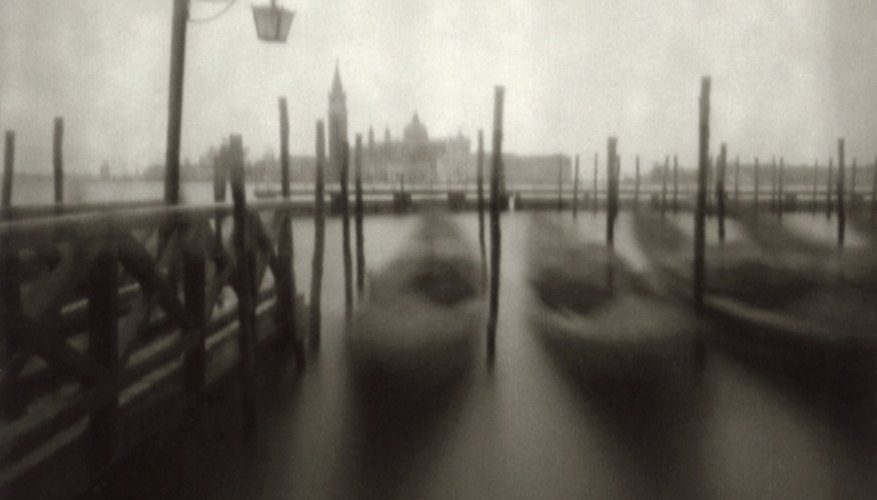A pinhole camera is a simple camera made from a light-tight box with a tiny pinhole instead of a lens. You can make a pinhole camera using basic household goods, and then use it to make exposures directly onto light-sensitive photographic paper. Although pinhole cameras are primitive and allow photographers less control, they offer an interesting, inexpensive alternative to high-tech camera equipment.
Low Expense
You can make a basic pinhole camera with materials you'll find around the house. Look for a simple cardboard box for the camera body, such as a shoebox, photo paper box or cylindrical oatmeal box. If you use a narrow box with a short distance between the pinhole and the paper, your camera will have a shorter focal length and will achieve greater depth of field. If you use a longer box, such as an oatmeal box, the camera will have a longer focal length and will have less depth of field. Other materials you'll need include aluminium foil, a pin or needle, black electrical tape and black paint. Once you've made the camera, you won't have to spend money on any lenses, light meters or other equipment. You'll simply need to buy light-sensitive paper to use as film and chemicals to develop the pictures.
- You can make a basic pinhole camera with materials you'll find around the house.
Educational Value
Pinhole cameras serve as educational tools to help beginner and serious photographers learn more about how photography works. Pinhole cameras rely on the simplest rules of light and exposure to create photographs. Light enters the camera body through the pinhole, as it enters a modern camera's lens, and projects an image upside down on the light-sensitive paper at the other side of the camera. In the developing process, chemicals reveal the paper's latent image and fix the surface to remove any light-sensitive silvers so the paper cannot be exposed further. These same basic principles apply to all analogue photography, no matter how complex the equipment used. Pinhole photographers can print their pinhole images in a bathroom or closet and can become familiar with developing procedures without needing to use enlargers or other equipment required for modern photography.
- Pinhole cameras serve as educational tools to help beginner and serious photographers learn more about how photography works.
- Pinhole photographers can print their pinhole images in a bathroom or closet and can become familiar with developing procedures without needing to use enlargers or other equipment required for modern photography.
Potential for Surprise and Experimentation
You can never quite predict what kind of image you'll get with a pinhole camera, because you cannot control the variables nearly as tightly as you can with more modern equipment. You can control the camera's focal length by choosing a particular-size box, and you can control the exposure time to some extent. However, you can never be as precise with a pinhole camera as you could with a modern Single Lens Reflex (SLR) camera, for example. Although this lack of control might seem like a limitation, it can also work as an advantage, allowing you to experiment and to stumble upon images you might never have been able to create intentionally.
- You can never quite predict what kind of image you'll get with a pinhole camera, because you cannot control the variables nearly as tightly as you can with more modern equipment.
